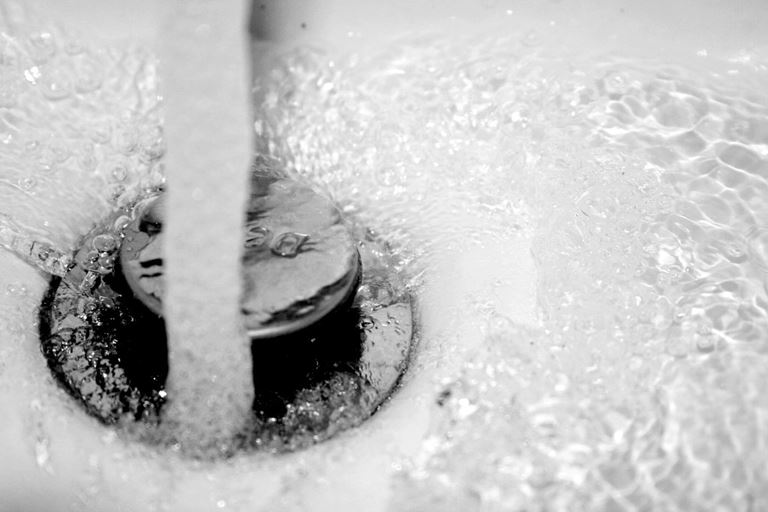
In situations like these, professionals, homeowners, and handymen will typically look to some form of handheld drain augers as the tool for the job. A clogged toilet should be cleared using a plunger or closet auger specially designed for the task. When the trouble has formed in the service lateral drain (the pipes running away from the home to the main utility or septic tank line) a motorized rooter or plumber’s snake will be used, which has the power to deal with dense clumps of roots and other solid obstructions.
But when a clog has formed affecting a specific household drain—including bathroom sinks, showers, bathtubs, kitchen & utility sinks, and shop & laundry drains—then the preferred tool will be a drain auger.
Not all handheld drain augers are strictly speaking hand-tools. While some drain snakes come equipped with drum spools which can be rotated by hand, many drain augers are attached to power tools such as a cordless drill. Both hand-cranked and motorized augers will be used in the same way to clear the blocked drain, but the extra force of a power tool should always be treated with respect.
Don't use snakes meant for sinks to unclog a toilet.
Sharp edges can scratch porcelain.
Use a snake designed for toilets, called a closet auger, or try a plunger.
Toilets have wider drains than sinks. If you extend too much narrow cable down a toilet, it can become tangled and caught.
You should consult the owner’s manual for proper and safe operation of your particular model of drain auger. When working on undamaged pipes, a correctly used auger is safe and generally advised for pipes constructed of all modern materials, including PVC, copper, steel, and concrete.
When a safe working environment has been established, the procedure will be gaining access to the drain, locating the clog, and bringing the auger down to bear on the blockage.
 GENERAL Expandable Head Toilet Auger* TOP OF THE LINE * Telescoping action to six feet with full ½ inch diameter cable.
GENERAL Expandable Head Toilet Auger* TOP OF THE LINE * Telescoping action to six feet with full ½ inch diameter cable.
 Cobra Pistol Grip Power Drum AugerHigh impact polymer housing. Clears small to medium household drains
Cobra Pistol Grip Power Drum AugerHigh impact polymer housing. Clears small to medium household drains
 FlexiSnake Drain Millipede Hair Clog ToolOur toughest hook & loop hair-clog tool. Reusable & works with most bathroom drains without disassembling the stopper
FlexiSnake Drain Millipede Hair Clog ToolOur toughest hook & loop hair-clog tool. Reusable & works with most bathroom drains without disassembling the stopper
When clogs form in bathroom sinks, showers, bathtubs, kitchen & utility sinks, or shop & laundry drains—then the preferred tool will be a drain auger.
UncloggingDrains101.comEverything to do with plungers, the different types of plungers, including ball-plungers and bellows-plungers, & including tips and instuctions for successful plunger use
UncloggingDrains101.comLearn how to use the common drain snake and be prepared to do-it-yourself when it comes to slow or stopped drains in the home
UncloggingDrains101.comEverything about unclogging floor drains, from the toughest job to the quickest maintenance
UncloggingDrains101.comLearn how to use the common drain snake and be prepared to do-it-yourself when it comes to slow or stopped drains in the home
UncloggingDrains101.comWhen clogs form in bathroom sinks, showers, bathtubs, kitchen & utility sinks, or shop & laundry drains—then the preferred tool will be a drain auger.
UncloggingDrains101.com